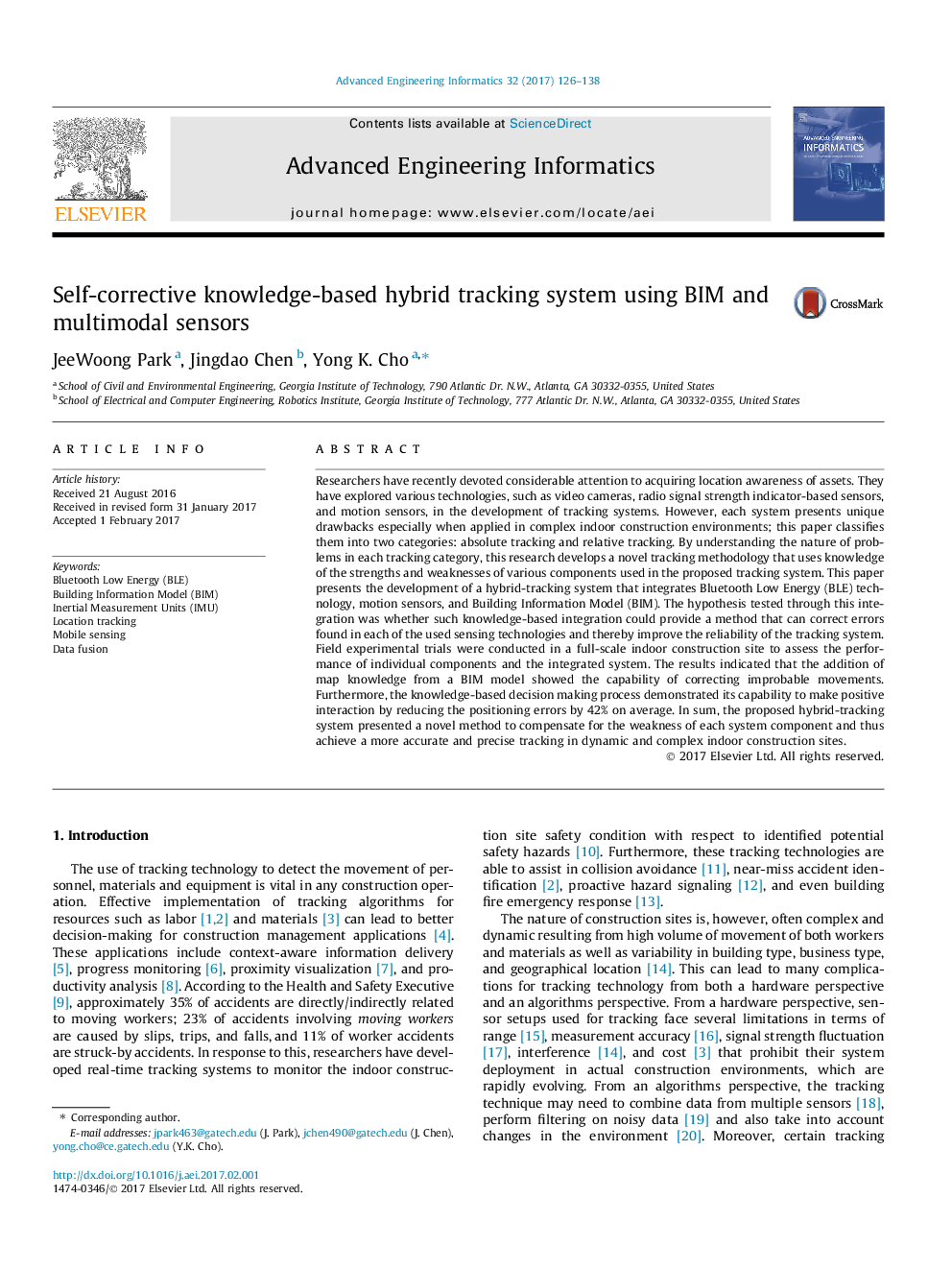| Article ID | Journal | Published Year | Pages | File Type |
|---|---|---|---|---|
| 4911039 | Advanced Engineering Informatics | 2017 | 13 Pages |
Abstract
Researchers have recently devoted considerable attention to acquiring location awareness of assets. They have explored various technologies, such as video cameras, radio signal strength indicator-based sensors, and motion sensors, in the development of tracking systems. However, each system presents unique drawbacks especially when applied in complex indoor construction environments; this paper classifies them into two categories: absolute tracking and relative tracking. By understanding the nature of problems in each tracking category, this research develops a novel tracking methodology that uses knowledge of the strengths and weaknesses of various components used in the proposed tracking system. This paper presents the development of a hybrid-tracking system that integrates Bluetooth Low Energy (BLE) technology, motion sensors, and Building Information Model (BIM). The hypothesis tested through this integration was whether such knowledge-based integration could provide a method that can correct errors found in each of the used sensing technologies and thereby improve the reliability of the tracking system. Field experimental trials were conducted in a full-scale indoor construction site to assess the performance of individual components and the integrated system. The results indicated that the addition of map knowledge from a BIM model showed the capability of correcting improbable movements. Furthermore, the knowledge-based decision making process demonstrated its capability to make positive interaction by reducing the positioning errors by 42% on average. In sum, the proposed hybrid-tracking system presented a novel method to compensate for the weakness of each system component and thus achieve a more accurate and precise tracking in dynamic and complex indoor construction sites.
Related Topics
Physical Sciences and Engineering
Computer Science
Artificial Intelligence
Authors
JeeWoong Park, Jingdao Chen, Yong K. Cho,
